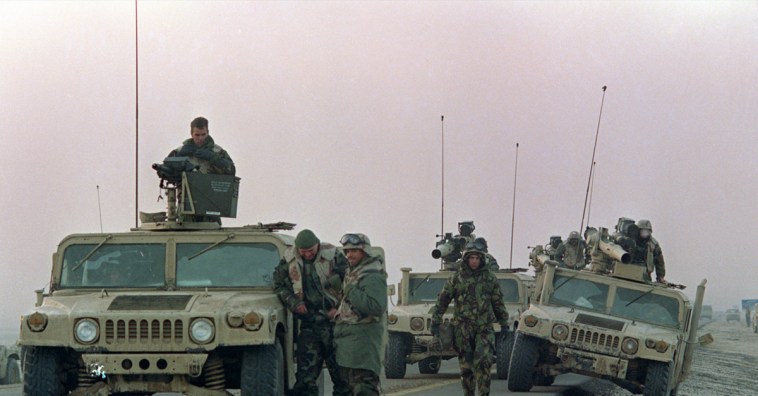A recent Newsweek piece details the great lengths the United States government have gone to to cover up the fact that 200,000 troops were exposed to nerve gas during the invasion of Iraq in 1991.
Videos By Rare
According to Newsweek, veterans are feeling the cost of this exposure almost 25 years later, with many experiencing a greater risk of developing brain cancer. During the invasion, the United States bombed many Iraqi compounds holding dangerous gasses, allowing the elements to rise into the air that soldiers were breathing.
Though they intiitally denied any exposure, the Department of Defense has changed their tune over the last two decades. Each time a report is released, the number of soldiers the DOD will admit were exposed steadily rises. The reports ultimately claim that the amount of gas the soldiers were exposed to was minimal.
“From the time the DOD initially admitted that troops may have been exposed, it constantly retallied the toll: In 1996, there were from 300 to 400; from 1997 to 2002, there were 5,000, 20,000, 99,000 and finally 101,752—but still, exposure to “very low levels of nerve gas agents,” Barbara Koeppel writes in Newsweek.
While many soldiers reported dizziness and nausea at the time of infection, the military maintained that they were merely feeling the impact of the intense Iraq heat, something many vets dispute to this day.
Ron Brown of the 82nd division told Newsweek that the military didn’t do much to help the infected soldiers, by giving them over the counter medication and a cool drink of water.
“Soldiers were nauseous, dizzy and had diarrhea and muscle spasms. About 30 of us went to the medic, who gave us Motrin and told us to drink water,” Brown said.
“But in a couple days, I had convulsions and collapsed. After this, they medevacked me to hospitals in Saudi Arabia and Germany, and then to the U.S,” retired Lieutenant Jim Bunker added.
According to Newsweek, Bunker is now categorized as 100 percent disabled by medical professionals.

